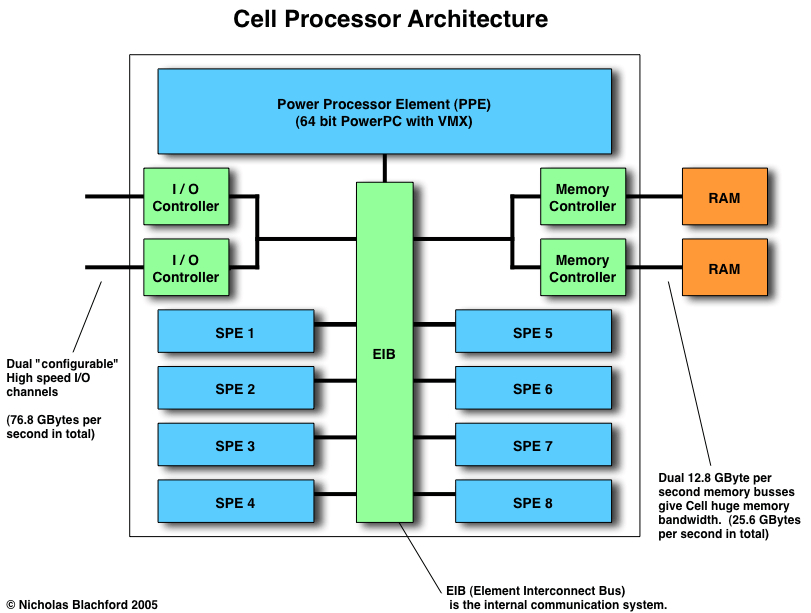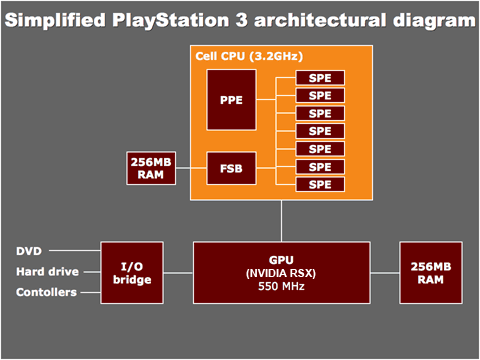staticneuron said:
Each of these elements inside the cell are clocked at 3.2GHz and are connected on a 4 ring Element Interconnect Bus(EIB) capable of a peak performance of ~204.8GB/s. Every processing element on the bus has its own memory flow controller and direct memory access (DMA) controller. Other elements on the bus are the memory controller to the 256MB XDR RAM, and two Flex I/O controllers.
http://en.wikipedia.org/wiki/Cell_microprocessor#Element_Interconnect_Bus_.28EIB.29 if everything is connected to the EIB there is no reduction of system perfomance as you are mentioning. There certain penalties incurred, for example... the cell writing to the RSX's local memory. But that would be rare for a developer to do and is entirely dependant on their situation. And that would be a prime example off methhodolgy being applied without understanding. EDIT: just in case this isn't clear enough.... the cell is fast 3.2 ghz but the XDR ram is also 3.2 ghz and so is the EIB. between the RSX, the cell and the ram I am not sure what else would be imprtant enough to somehow hamper the system. Even the prehipherals come in over the high speed I/O channels which are connected to the EIB.
Maybe I am missing something? |
What you are missing are first that the EIB is just for the parts within the Cell itself. That does allow the Cell's incredible speed, but that does not connect the rest of the system to the Cell.
Second, that it's not how fast the data travels. Any system worth its salt can do that nearly instantaneously, even the oldest systems. It's how much data can travel through a bus at a time, and how quickly the next set of data can travel.
For example, the RSX RAM, an advanced form of Rambus DRAM, does have a high clock speed. That is apparenlty why it's ideal for FMVs (hence for blu-ray playback). Yet it also has a much slower latency than other forms of RAM. Now when it comes to system RAM, clock speed and latency can be interchangable, but that means that the GDDR3 RAM that the 360 uses is on equal footing with the RSX, since it has a slower clock speed, but much faster latency.
And no, the Cell can't overcome that. If the Cell processes more than 256MB of non-graphical data, that extra data isn't fitting into the system RAM, no matter how fast the Cell processed that data. It just doesn't work that way. The data beyond those MB has to wait for the next cycle, which depends on the clock speed and latency of the RAM, hence why the 360's RAM can work just as fast.
Now things that the Cell can process faster in its RAM cycle than the Xenon can will be better on the PS3. This is why the Cell is so good at physics. They take up the same amount of memory on both systems, yet the Cell can calculate more in one real time cycle than the 360 can. And if post-processing works that way as well, then the PS3 has a way to compensate for having to use its VRAM for frame buffering and texture buffering (the 360 splits that with the 10MB of EDRAM for frames, and the 512MB of GDDR3 for texturing).
So my point is the Cell isn't set up to make the rest of the PS3 run faster. Real time graphics don't work that way.
A flashy-first game is awesome when it comes out. A great-first game is awesome forever.
Plus, just for the hell of it: Kelly Brook at the 2008 BAFTAs



















